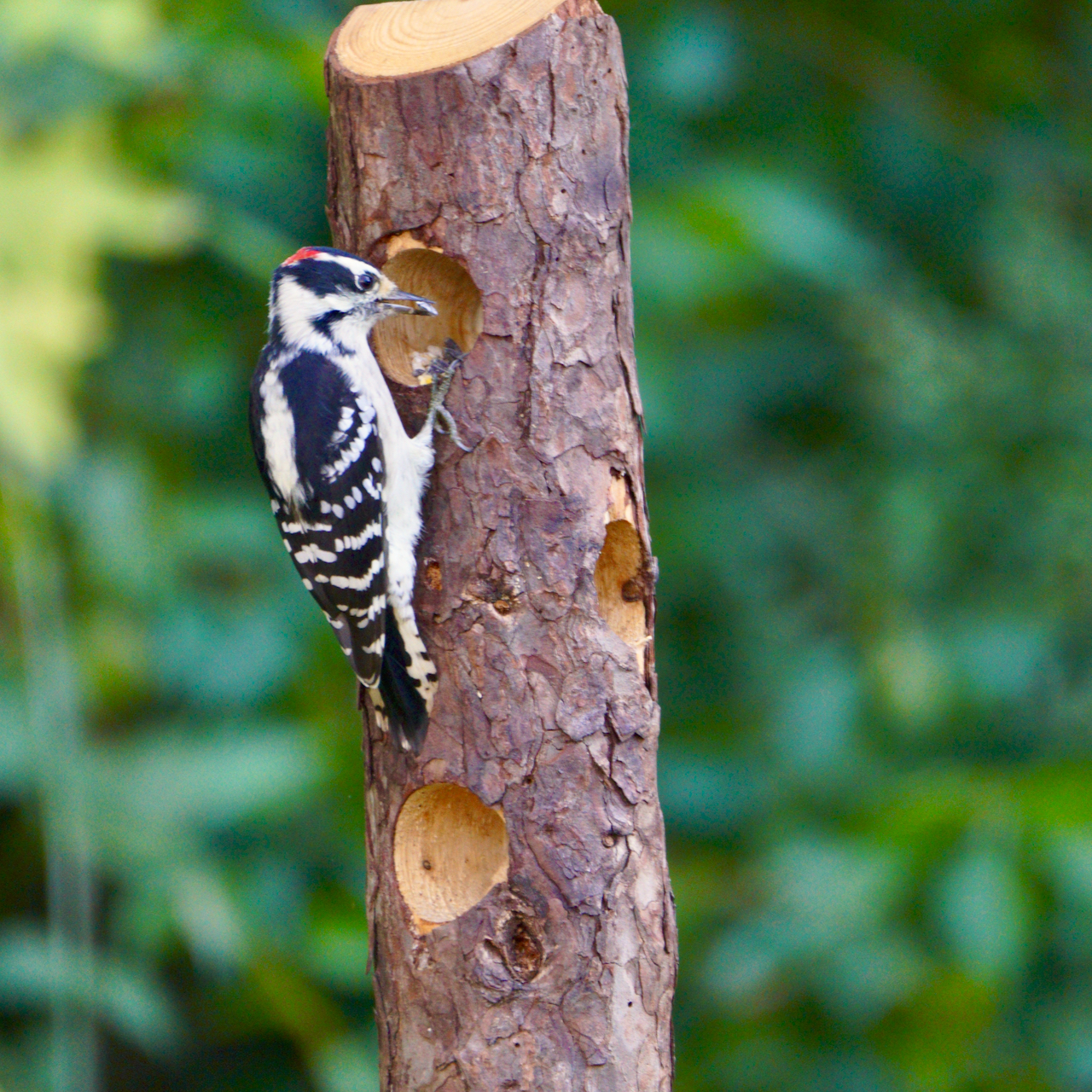Downy Woodpeckers are small, active birds that are often seen foraging for insects in trees. 
They are also known for their distinctive drumming sound, which they use to communicate and defend their territory.
Downy Woodpeckers can be a challenge to photograph, but with a little patience and planning, it is possible to capture some great images of these fascinating birds.
Here are some tips for photographing Downy Woodpeckers:
Use a telephoto lens. Downy Woodpeckers are small birds, so it is important to use a telephoto lens to get close-up shots. A lens with a focal length of at least 300mm is ideal.
Find a good spot. Downy Woodpeckers are often found in wooded areas, but they can also be seen in parks and suburban yards.
Look for a spot where you can see the birds foraging or drumming.
Be patient. Downy Woodpeckers are active birds, but they can also be quite shy.
Be patient and wait for the birds to come to you.
Use a fast shutter speed. Downy Woodpeckers move quickly, so you will need to use a fast shutter speed to freeze their motion.
A shutter speed of 1/500th of a second or faster is recommended.
A good guideline to follow is to shoot at a shutter speed equal to or greater than the focal distance; if your focal distance is 500mm then you should start at a shutter speed of 1/500th or more.
This is just a guideline and is less important with modern cameras.
Experiment with different settings. Try different camera settings to see what works best for you.
Here are some additional tips that may help you capture even better photos of Downy Woodpeckers:
I find it important to Focus on the eye.
The eye is one of the most important elements of a bird photo.
When focusing, try to focus on the bird’s eye to get a sharp and detailed image.
Use natural light. Natural light is always best for bird photography.
If you are shooting in low light, try to use a high ISO setting.
Keep in mind that while increasing ISO will increase the amount of light the camera sensor receives, it also increases graininess (noise).
Be respectful of the birds. Do not disturb the birds or get too close.
If the birds seem stressed, back away and try again later.
Here are some ideas for creative Downy Woodpecker photos:


Capture the bird in action. Photograph the birds foraging, drumming, or flying.
Use a shallow depth of field to blur the background. This will help to make the bird stand out.
Use a creative angle or perspective. Try shooting from below or from the side to get a unique perspective.
Include other elements in the photo. For example, you could photograph the bird with a flower, a leaf, or a branch.
I have a garden area set up in my yard that I change seasonally to attract various birds.
It’s set up in a way that allows me to take natural-looking photos of the various critters that come through.
The photo on the left shows one of my setups, a log hanging from a shepherd’s crook with a strip of parachord.
On the right, when cropped in it looks like a tree branch.
Woodpeckers, Blues Jays, and Cardinals are attracted to Sunflower seeds and suet, so there’s plenty of that in our Graden Studio.
This year we even started growing our own Sunflowers to create a more natural setting.
With a little patience and creativity, you can capture some amazing photos of Downy Woodpeckers.
